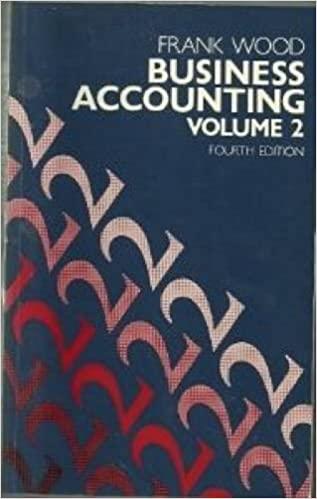Question
01. The realized gains from selling of trading securities and available-for-sale securities are the differences between the selling price and: Select one: a. the cost
01. The realized gains from selling of trading securities and available-for-sale securities are the differences between the selling price and:
Select one:
a. the cost for both securities.
b. the fair value at the most recent financial statements for both securities.
c. the fair value at the most recent financial statements and the cost, respectively.
d. the cost and the fair value at most recent financial statements, respectively.
02. The unrealized gain/loss from investment valuation for trading securities and available-for-sale securities should be reported in:
Select one:
a. the income statement for both securities.
b. the balance sheet statement for both securities.
c. the income statement and the balance sheet statement, respectively.
d. the balance sheet statement and the income statement, respectively.
03. Equity securities acquired by a corporation which are accounted for by recognizing unrealized holding gains or losses are
Select one:
a. securities where a company has holdings of less than 20% and has no significant influence over the investee.
b. securities where a company has holdings of more than 20% and has significant influence over the investee.
c. securities where a company has holdings of more than 50%.
d. none of the above.
04. When a company holds between 20% and 50% of the outstanding stock of an investee, which of the following statements applies?
Select one:
a. The investor should always use the equity method to account for its investment.
b. The investor should use the equity method to account for its investment unless circumstances indicate that it is unable to exercise "significant influence" over the investee.
c. The investor must use the fair value method unless it can clearly demonstrate the ability to exercise "significant influence" over the investee.
d. The investor should always use the fair value method to account for its investment.
05. In applying the fair value option under ASC 825-10-25 (Predecessor literature Statement of Financial Accounting Standards No. 159: The Fair Value Option for Financial Assets and Financial Liabilities), a company
Select one:
a. has the option to apply the fair value option to its investments classified as securities held-to-maturity and securities-available-for-sale on an instrument-by-instrument basis.
b. is required to apply the fair value option to its investments classified as securities held-to-maturity and securities available-for-sale.
c. has to apply the fair value option to all (not some) investments in securities if it elects the fair value option.
d. none of the above.
Step by Step Solution
There are 3 Steps involved in it
Step: 1

Get Instant Access to Expert-Tailored Solutions
See step-by-step solutions with expert insights and AI powered tools for academic success
Step: 2

Step: 3

Ace Your Homework with AI
Get the answers you need in no time with our AI-driven, step-by-step assistance
Get Started


